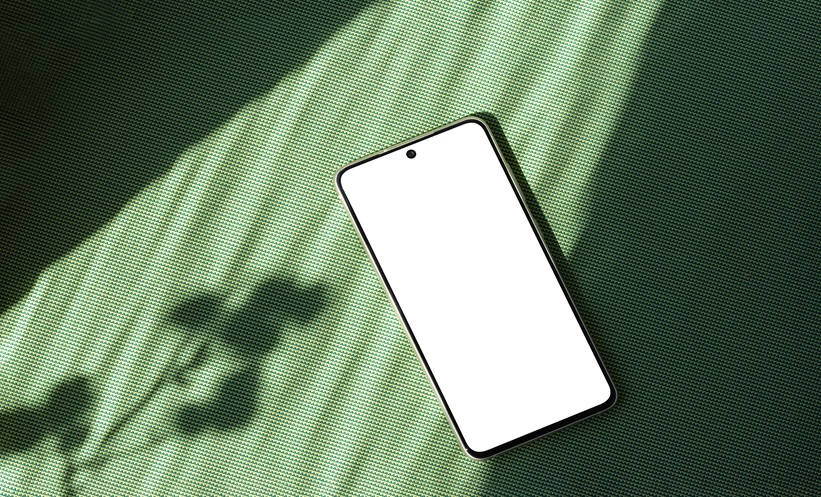Abstract
Biologics are large complex molecules that are produced in living systems. They have revolutionised the treatment of patients suffering from various diseases, including inflammatory bowel disease. However, in many parts of the world, patient access to biologics has been hampered, mainly because of the high costs associated with these therapies. Since the patent expiration of several of these biologics, biosimilars have emerged, promising equal effectiveness and safety for patients but at a more affordable price. Despite this, concerns remain regarding the use of biosimilars as replacements for biologics. This review discusses the issues and controversies surrounding the development and applicability of biosimilars in the field of gastroenterology.
INTRODUCTION
Biotherapeutic agents, also known as biologics, are large complex molecules that are produced in living systems.1 Biologics comprise a range of molecules with varying complexities, including peptides, such as human insulin; small proteins, like erythropoietin; and large molecules, including monoclonal antibodies.2 The use of biologics in the field of gastroenterology is largely confined to the treatment of the immune-mediated inflammatory bowel diseases (IBD), such as ulcerative colitis (UC) and Crohn’s disease (CD). There are four biological agents that target tumour necrosis factor (TNF)-α (anti-TNF-α therapies); namely, infliximab, adalimumab, certolizumab pegol, and golimumab. Additionally, there are two cell adhesion molecules approved for use in IBD that target α4-integrin and α4β7-integrin, known as natalizumab and vedolizumab, respectively. The use of biologics has revolutionised the treatment of IBD by significantly improving outcomes while maintaining a good safety profile.3
However, one important limiting factor for the use of biologics in clinical practice is the considerably high cost of this treatment. This factor, coupled with the actual or impending patent expiration of biologics, has given rise to the development of highly similar copy versions of the originator or reference drug, known as biosimilars. The World Health Organization (WHO) defines a biosimilar as a biotherapeutic product that is similar in terms of quality, safety, and efficacy to an already licensed reference biotherapeutic product.4 The infliximab biosimilar CT-P13, marketed under the trade name of RemsimaTM or Inflectra®, was the first biosimilar licensed for use in IBD treatment in Europe, receiving approval from the European Medicines Agency (EMA) in 2013.5 This was followed by Flixabi®, which received approval in 2016.6
MANUFACTURING PROCESS
Although biosimilars are only marketed after expiration of the reference drug’s patent, much like small-molecule generic drugs, they are not considered to be generic drugs. This is due to several key differences between biologics, biosimilars, and small-molecule drugs; biologics differ significantly from small-molecule drugs in their size, complexity, and manufacturing process. In addition, while small-molecule drugs typically have a molecular weight of between 0.1 and 1.0 kDa, biologics have much larger and more complex chemical structures, commonly ranging from 18–150 kDa.7 Small molecule drugs are produced by chemical synthesis, while biologics are typically produced by living cells through complex manufacturing and purification processes. They also differ in their route of administration; small molecule drugs are generally administered orally, while biologics are most often delivered via the parenteral route. Biologics also have greater immunogenic potential, in part due to their larger size, compared to small-molecule drugs, which are generally non-immunogenic.7,8 Infliximab is known to carry more clinical consequences due to immunogenicity compared to etanercept and filgrastim, including loss of response and infusion reactions.9
Biosimilars are unlikely to be the exact replica of the originator drug because of the complex manufacturing process and lack of access to the original cell line. Typically, the manufacturing process of biologics requires multiple steps for cloning, selecting, maintaining, and expanding the cell line; and isolating, purifying, and characterising the product. However, this is not the case for small-molecule generic drugs, where it is possible to generate an identical molecule through a series of predictable chemical reactions. Developers of biosimilars usually do not have access to the manufacturing details of the reference drug and therefore need to develop their own manufacturing process capable of producing a product closely resembling the originator product. Manufacturing differences between a biosimilar and the reference drug can lead to differences in molecular structure, content, biological activity, and immunogenicity. However, any given biological product is likely to be modified several times throughout its life cycle, after which it is unlikely to resemble its original version at marketing authorisation.10
REGULATORY LANDSCAPE
To establish that the proposed biosimilar meets the requirements for biosimilarity, regulatory agencies require a rigorous, stepwise biosimilarity assessment. There are several regulatory pathways for the development of biosimilars worldwide, notably by the EMA, the U.S. Department of Health and Human Services (HHS), and the U.S. Food and Drug Administration (FDA). Although there is a slight difference in the regulatory requirements, the basic principles governing both pathways are very similar.7
The European Union (EU) pioneered the development of regulatory requirements for biosimilars in 2005 when the EMA published a general framework guideline to introduce the principles of biosimilarity. The EMA was also the first regulatory agency to give marketing authorisation for biosimilars in 2006. The outline of the regulatory approach includes comparing the proposed biosimilar with its reference product in analytical and clinical studies to demonstrate similarity with regard to quality, safety, and efficacy.11
In practice, regulatory authorities require two phases of clinical trials for approval of a biosimilar product for one indication, including a Phase I study to demonstrate equivalence in terms of pharmacokinetics, pharmacodynamics, and safety. An adequately powered, randomised, parallel group Phase III clinical study is subsequently carried out to demonstrate no clinically meaningful difference with respect to efficacy, safety, and immunogenicity between the biosimilar and the reference product.3
EXTRAPOLATION
Extrapolation refers to the idea that clinical studies of biosimilars can be performed in one disease state or population group and then inferred to work in other disease settings or indications for which the reference biologic is approved and licensed. In the EU, in cases where the effectiveness of biosimilarity has been recognised in one indication, extrapolation to other disease settings of the reference product may be acceptable, providing appropriate scientific justification is provided.12 Similarly, in the USA, guidelines state: “sufficient scientific justification for extrapolating clinical data to support a determination of biosimilarity for each condition of use for which licensure is sought.”13 To support extrapolation, a biosimilar needs to demonstrate similarity of mechanism of action, target-binding characteristics, pharmacokinetics, and biodistribution to the originator drug in clinical tests and the extrapolated indications. Furthermore, any expected differences in toxicity or effectiveness must be addressed.
CT-P13 is an infliximab biosimilar that has received marketing authorisation for all indications of infliximab through extrapolation of efficacy and safety data. In a series of analyses, CT-P13 was shown to have identical primary and higher order structures to infliximab; monomer and aggregate contents, overall glycan types, and distribution were indistinguishable, and potencies and binding affinities were comparable to infliximab.14
In a Phase I, randomised, double-blind study (PLANETAS),15,16 the pharmacokinetics, safety, and efficacy of CT-P13 was compared to its originator infliximab, Remicade®, in patients with ankylosing spondylitis. The equivalent pharmacokinetics profile and comparable tolerability, safety, and efficacy, prompted Celltrion (Incheon, South Korea) to undertake a Phase III, randomised double-blind study (PLANETRA)17,18 to demonstrate equivalence in the efficacy and safety of biosimilar infliximab CT-P13 compared with the originator infliximab, Remicade, when co-administered with methotrexate in patients with active rheumatoid arthritis. There were no significant differences in the efficacy, safety, or pharmacokinetic profile between biosimilar infliximab CT-P13 and Remicade. Similar immunogenicity was also observed in patients with rheumatoid arthritis or ankylosing spondylitis who switched from Remicade to CT-P13.19,20
Following these studies, CT-P13 received regulatory approval in South Korea in July 201221 and subsequently became the first biosimilar to infliximab to receive regulatory approval by the EMA (in September 2013)22 and by the FDA (in April 2016)23 for all the therapeutic indications for which infliximab was previously authorised (rheumatoid arthritis, ankylosing spondylitis, psoriatic arthritis, psoriasis, adult CD, paediatric CD, adult UC, and paediatric UC).
In 2016, SB2 (marketed as Flixabi) became the second infliximab biosimilar to obtain regulatory approval in Europe for the treatment of rheumatoid arthritis, ankylosing spondylitis, psoriatic arthritis, psoriasis, adult CD, paediatric CD, adult UC, and paediatric UC.6 The approval of SB2 was based on data derived from a randomised Phase I pharmacokinetic study comparing SB2 and Remicade in 159 individuals,24 and a randomised, double-blind, multinational, parallel-group, Phase III study comparing SB2 to the infliximab reference product in 584 patients with moderate-to-severe rheumatoid arthritis who were already receiving methotrexate therapy.25
The concept of extrapolation is not free of issues. Health Canada previously did not approve the extrapolation of indications to CD, UC, or paediatric patients due to the differences in the levels of fucosylation, FcγRIIIa binding, and some in vitro trials for antibody-dependent cell-mediated cytotoxicity. However, despite the lower in vitro antibody-dependent cell-mediated cytotoxicity activity of CT-P13, these differences disappeared under physiologic conditions, questioning the clinical relevance of the observed differences in FcγRIIIa binding.26 Furthermore, the binding of the test and reference product to the soluble and/or membrane-bound TNF-α were comparable. Inhibition of TNF on epithelial cells and induction of regulatory macrophages were also similar.10
BIOSIMILARS IN INFLAMMATORY BOWEL DISEASE
Several studies have shown CT-P13 to be effective and well-tolerated in patients with CD or UC,27-38 including two studies involving paediatric patients.33,34 In addition, it is the only biosimilar to have real-world data on patients with IBD. An observational cohort study conducted in Hungary of 210 patients with IBD (22% of the patients had been previously exposed to infliximab) reported induction data for CT-P13.27 At Week 14, 81% of patients with CD and 78% of patients with UC showed clinical response; 54% of patients with CD and 59% of patients with UC were in clinical remission. Patients were followed up to Week 30 and adverse events were experienced in 17% of the individuals; infusion reactions and infectious adverse events occurred in 7% and 6% of all patients, respectively. A Norwegian study of 78 patients (46 with CD and 32 with UC)28 and two Korean studies, the first of which included 173 patients (95 with CD and 78 with UC) and the second of which comprised 110 patients (59 with CD and 51 with UC),29,30 similarly reported excellent induction results.
A prospective cohort study of 83 patients with IBD conducted by Smits et al.31 showed that switching from Remicade to CT-P13 did not have a significant impact on short-term clinical outcomes. The NOR-SWITCH trial,32 a randomised, non-inferiority, double-blind, Phase IV trial with 52 weeks of follow-up, showed that switching from Remicade to CT-P13 was not inferior to continued treatment with Remicade. Similarly, Sieczkowska et al.33 demonstrated that switching from Remicade to CT-P13 is an effective and safe option in children with IBD; induction therapy with CT-P13 in children with CD was also shown to be effective.33
In a study of 125 patients with IBD and healthy controls, Ben-Horin et al.39 showed that anti-Remicade antibodies in patients with IBD recognise and functionally inhibit CT-P13 to a similar degree, suggesting similar immunogenicity and shared immunodominant epitopes on these two infliximab agents. Finally, a study by Gils et al.40 concluded that the assay for therapeutic drug monitoring of Remicade can also be used to determine Remsima and Inflectra concentrations, and that in all patients with IBD who develop anti-Remicade antibodies, the antibodies cross- react with infliximab biosimilars.
In view of these results, the British Society of Gastroenterology (BSG) concluded that there is sufficient data to show that safety, clinical efficacy, and immunogenicity of CT-P13 are similar to the reference biologic, and that switching from infliximab to CT-P13 is safe and effective.41 This position also reflected that of the European Crohn’s Colitis Organisation (ECCO), which stated: “data for the usage of biosimilars in IBD can be extrapolated from other indications” and “switching from the originator to a biosimilar in IBD is acceptable.”42
IMMUNOGENICITY
Anti-drug antibodies (ADA), typically IgG antibodies with neutralising and binding properties, can lead to reduced efficacy and a reduction in anti-TNF levels and allergic reactions. ADA have been documented in up to 60% of patients with CD when infliximab was used on an ad hoc basis and 10–20% of patients in randomised controlled trials of maintenance therapy.43,44 The PLANETAS and PLANETRA studies showed no difference between ADA formation in subjects treated with originator infliximab or CT-P13 at Weeks 5215,17 and 104.19,20 As mentioned previously, the study by Ben-Horin et al.39 showed high similarity in binding, resulting in similar immunogenicity and the presence of shared immune-dominant epitopes between CT-P13 and the reference product infliximab. The NOR-SWITCH study32 also established no differences in ADA formation between patients who switched to CT-P13 and all the study patients.
With regard to SB2, 55.2% in the SB2 treatment group developed ADA compared to 49.7% in the infliximab group; however, this was not statistically significant. Trough levels of infliximab were similar between SB2 and infliximab over time and were also similar in each ADA subgroup (ADA-positive and ADA-negative) between SB2 and infliximab.25
INTERCHANGEABILITY AND SUBSTITUTION
Interchangeable means that the biological medicinal products can be substituted for one another, without loss of efficacy or decrease in safety. To be considered interchangeable, the efficacy and safety risk of a biosimilar should not be greater than that of the reference biologic.45 Substitution is the practice whereby a branded product can be swapped and occurs at the dispensing level when a pharmacist elects to change a product without the prescribing physician’s prior consent.
According to the FDA: “interchangeable products are both biosimilar to an FDA-approved reference product and can be expected to produce the same clinical result as the reference product in any given patient.”46 If administered more than once to a patient, the risk in terms of safety or efficacy of alternating or switching (between biosimilar and originator) must not be greater than the risk of using the reference product without alternating or switching. An interchangeable product may also be substituted at pharmacy level without the intervention of the prescribing physician.46
There are differences in the legislations for interchangeability and substitution between the USA and the EU. The FDA has the authority to designate a biosimilar as interchangeable, but substitution is regulated at state level. Many states in the USA have already developed proposals for the substitution of innovator biologic agents with biosimilars at the pharmacy level. Provision of state legislations vary, but they have several common features and substitution is permitted only if the FDA has designated the biosimilar as interchangeable; however, substitution is prohibited if the prescribing physician has indicated a preference for the reference product and the patient must be notified that a substitution has been made.46 As of November 2016, 36 states have considered legislation to establish standards for biosimilar substitution and 25 have enacted substitution laws.47 In comparison, the EMA has abstained from providing guidance on interchangeability, leaving this decision to the respective national authorities.48 France was the first EU member to explicitly authorise biosimilar substitution for naïve patients (those who had received neither the innovator drug or the biosimilar).49 However, switching, interchangeability, and substitution are under discussion in other EU countries.50-52
Physicians often have to make the decision about switching from the reference biologic (Remicade) to a biosimilar (Inflectra, Remsima, or Flixabi). In the future, they will need to also consider a switch in the opposite direction (reverse-switch) or from one biosimilar to another (cross-switch) and this explains why detailed rules for interchangeability and substitution are warranted; the design of these rules will also determine the extent to which they will promote or limit substitution in the future.53
ECONOMIC CONSIDERATIONS
The main purpose of producing biosimilars is to reduce the costs of drugs. In 2007, $286.5 billion was spent on prescription drugs in the USA, of which $40.3 billion was for biologics. It has been estimated that a biosimilar will cost $100–200 million to develop, according to figures from DiMasi et al.,54 and an innovator biologic costs ≥$800 million.54,55 Due to reduced testing requirements for approval, it has been approximated that biosimilars will cost 20–40% less than their reference products.56
As a result of biosimilar use, cumulative savings to healthcare systems in the EU and USA could total >$56 billion and might reach as high as $112 billion.57 Moreover, the reduced costs could also increase patient access to biologic therapies; access to biologic drugs was not possible in 10 out of 46 European countries in 2014, due to cost constraints.58 Notably, patient access to biologic treatments has grown by as much as 100% following the availability of biosimilars.57
Due to the sizeable costs associated with manufacturing, quality control, marketing, storage, and special requirements for pharmacovigilance, the price reduction of biologic agents might not be as profound as for generics of small- molecule medicines (competition between multiple manufacturers ultimately drives prices of generics down by 50–80% in most markets).59,60 In the EU, where biosimilars have been available for several years, the prices have been lowered by an average of ˜30% compared to those of the reference products.61,62 However, there is considerable variation in price reductions between European countries,63 with the most impressive price discount of 69% seen for CT-P13 in Norway.
CONCLUSION
Although biologic therapy has revolutionised the treatment of many inflammatory conditions, including IBD, access to this therapeutic option has been hampered by its high cost. CT-P13 was the first infliximab biosimilar to obtain approval by the EMA in September 2013, followed by Flixabi in 2016. Even more biosimilars are in the development pipeline and data on adalimumab biosimilars have started to become available.64,65 Extrapolation is a valid, evidence-based process, and state-of-the-art physicochemical and biological characterisation studies show high similarity between CT-P13, Flixabi, and originator infliximab. The introduction and availability of biosimilars has already widened patients’ access to such important treatment, and this will lead to a change in the landscape of managing many chronic inflammatory conditions, including IBD. With mounting evidence that shows CT-P13 is effective and well-tolerated among IBD patients, we conclude that the gastroenterology field is ready for biosimilars.








